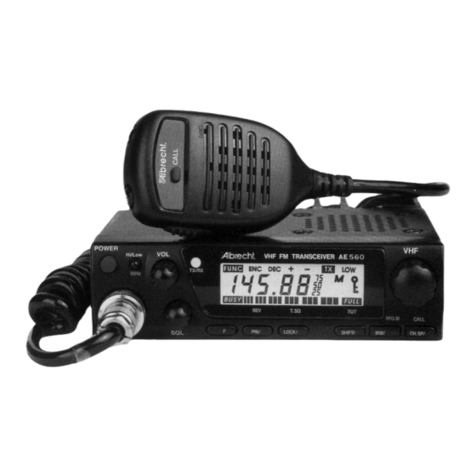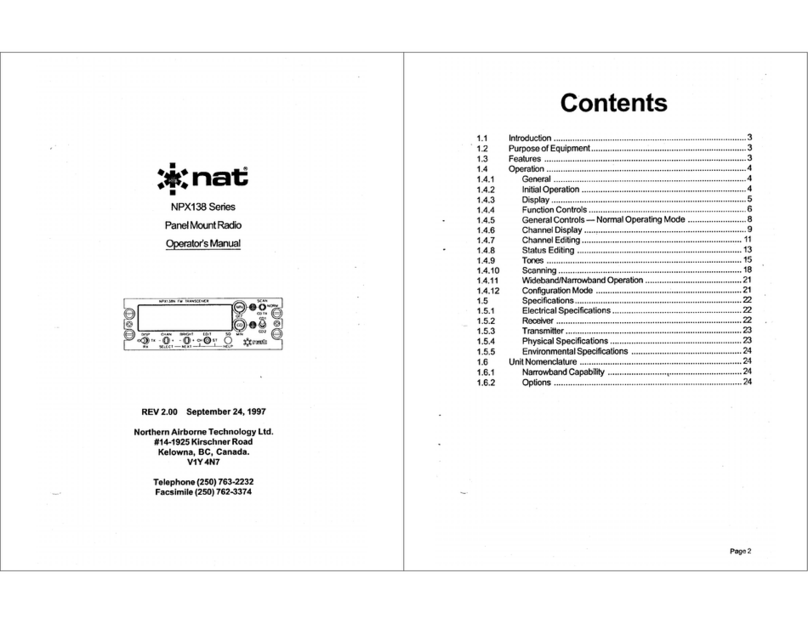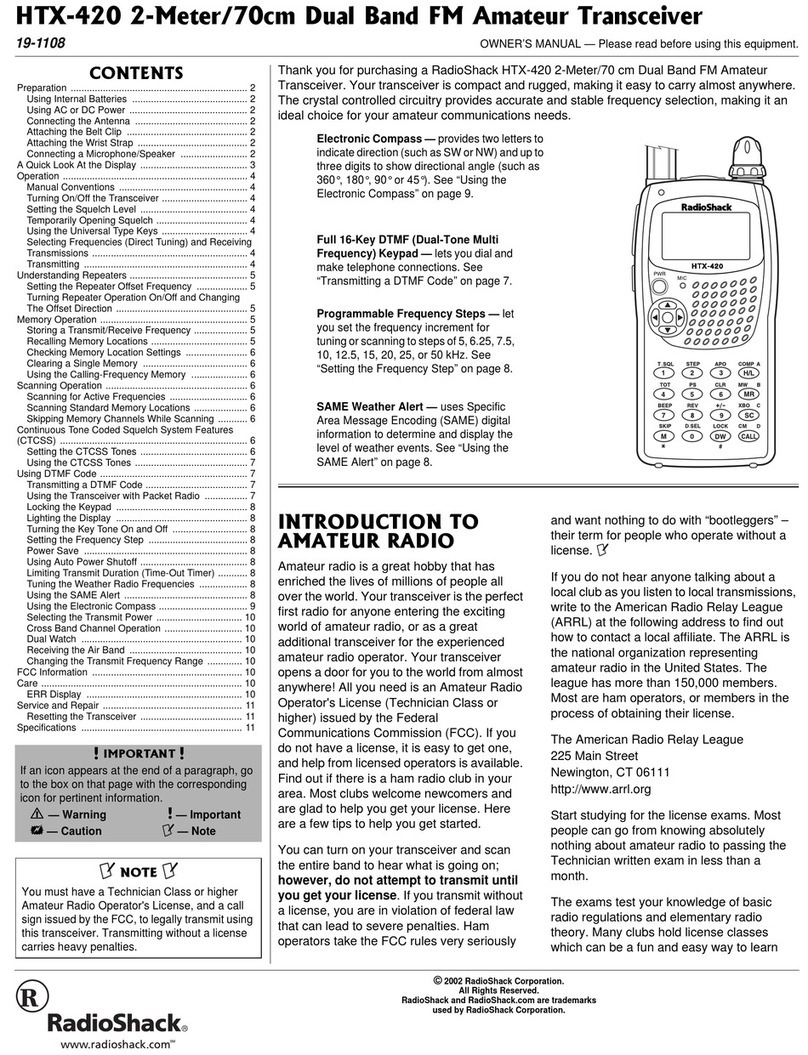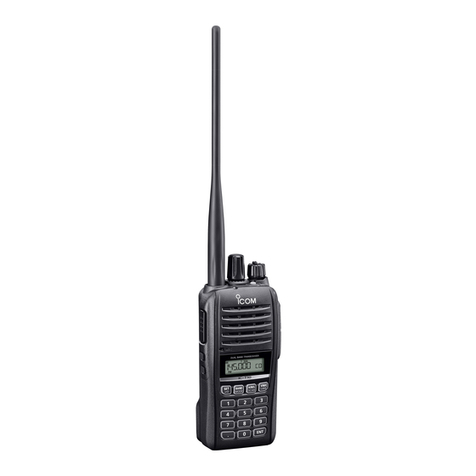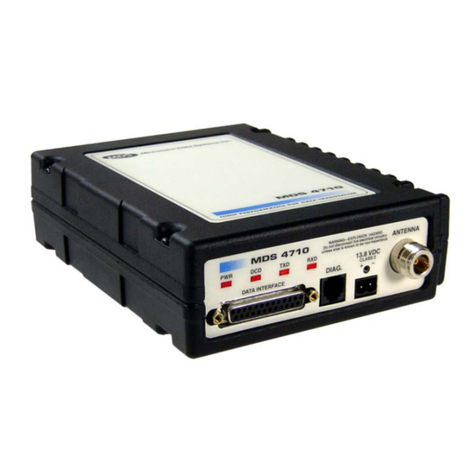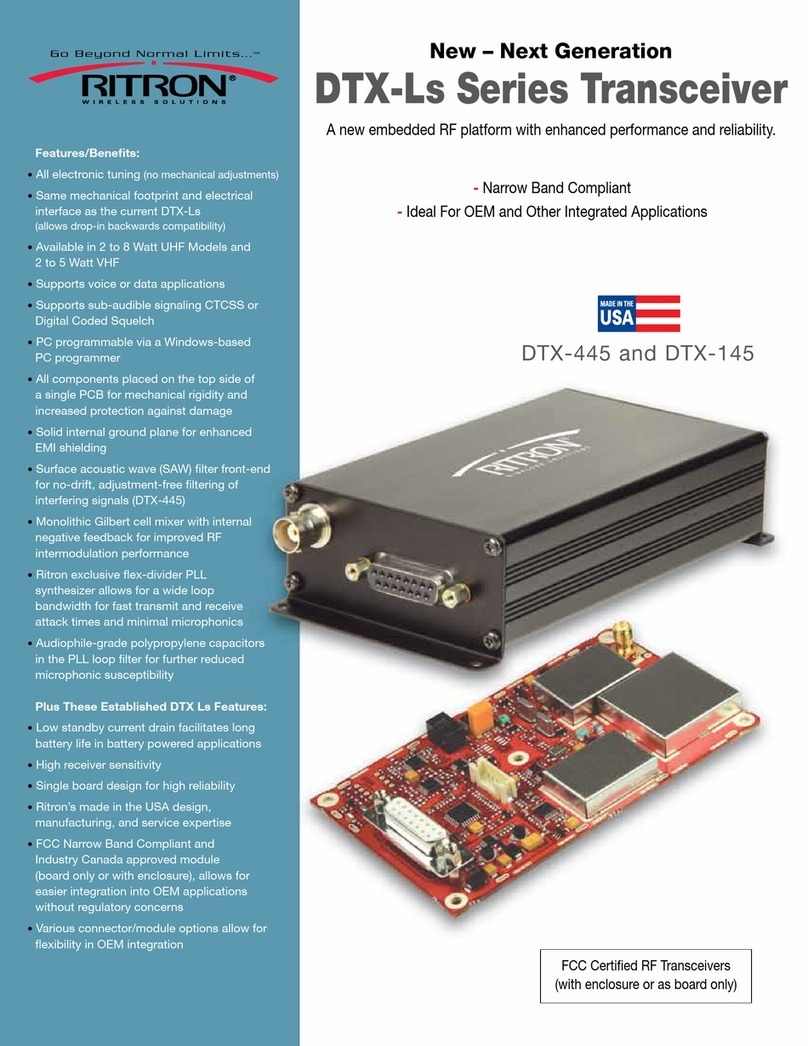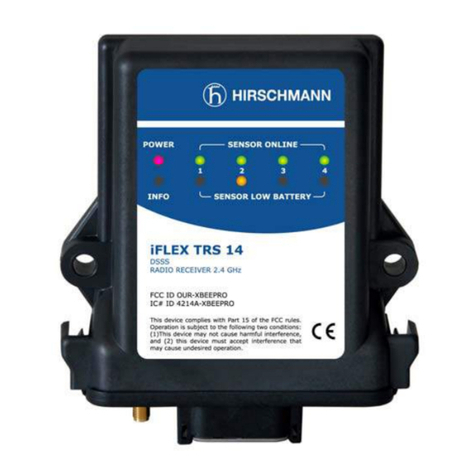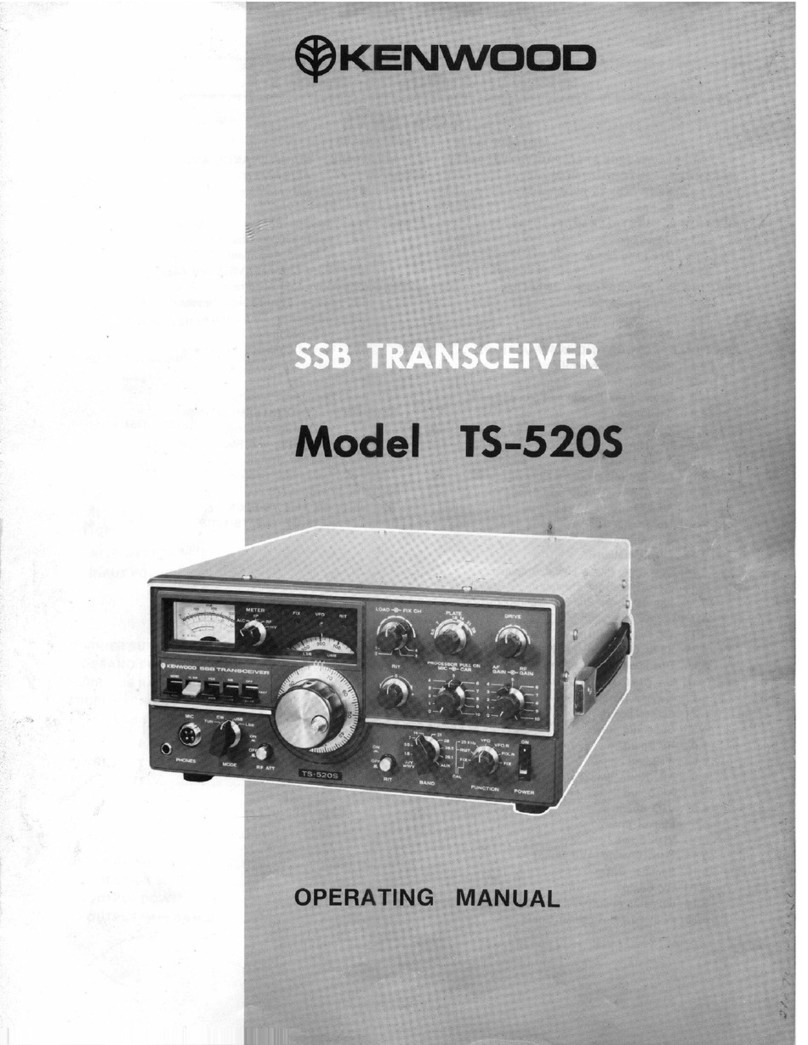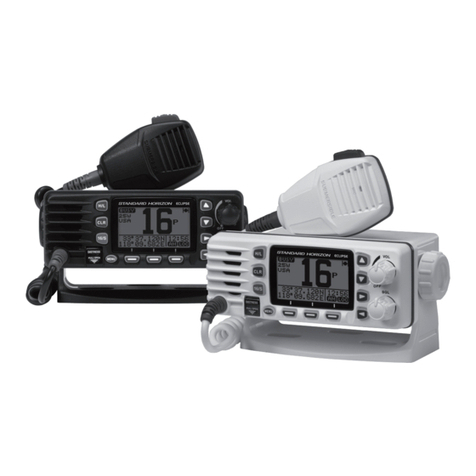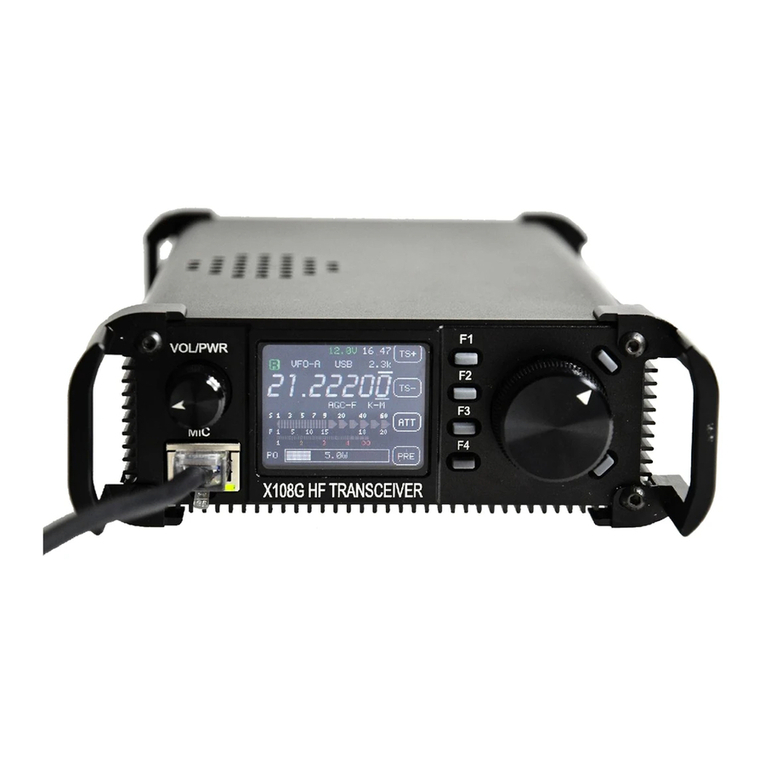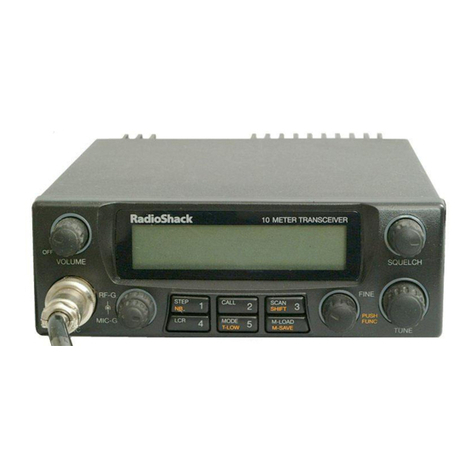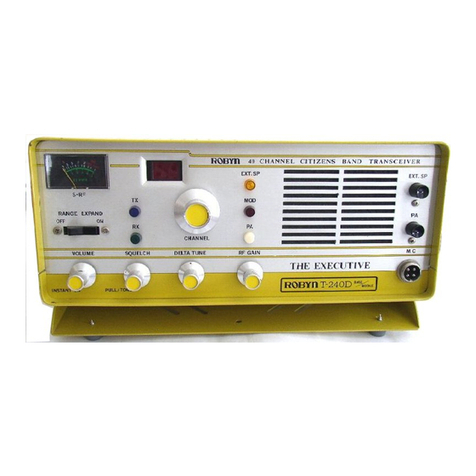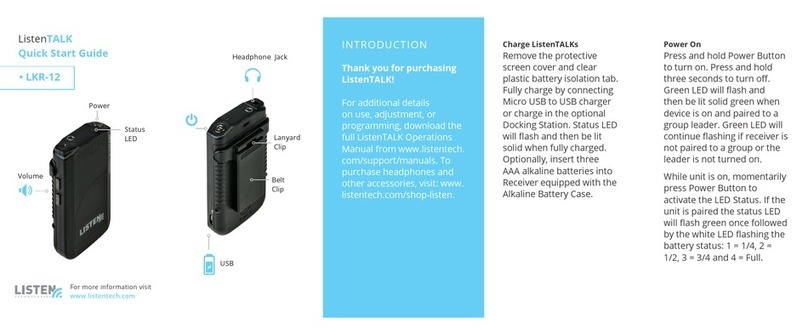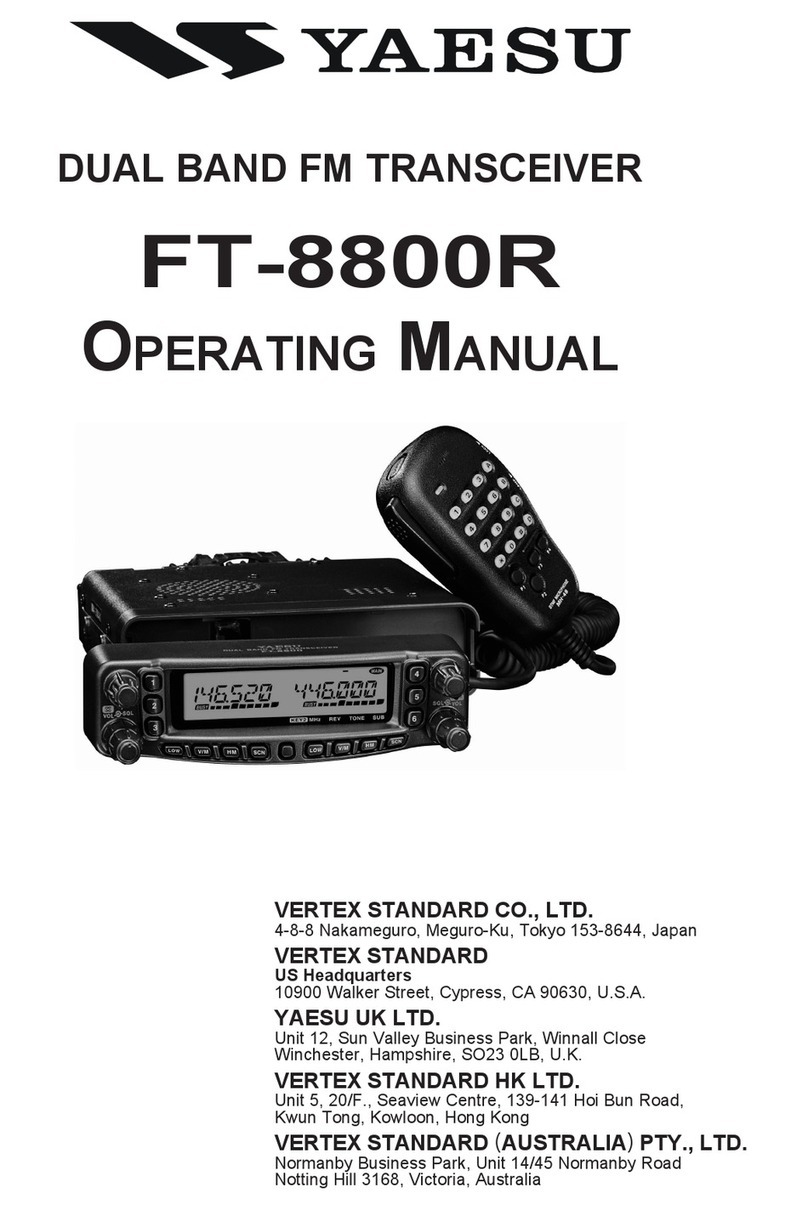FMN WZ FSE 2-2 User manual

WZ FSE 2-2
Instructions for use

2
3
Table of contents
Safety precautions ........................................................................................................................................................................ 4
1. General instructions................................................................................................................................................................ 5
2. Product description................................................................................................................................................................. 6
2.1 Description of device-specic features ............................................................................................................................ 6
2.2 Function elements ........................................................................................................................................................... 7
2.3 Interfaces of the unit ........................................................................................................................................................ 7
2.3.1 Pin assignment of the power supply ........................................................................................................................... 7
2.3.2 Pin assignment of the user interface for analogue peripherals ................................................................................... 8
2.3.3 Pin assignment of the user interface for digital peripherals....................................................................................... 11
3. Putting into operation ........................................................................................................................................................... 14
3.1 Basic mode when the unit has been switched on.......................................................................................................... 14
3.2 Memory selection at the user interface.......................................................................................................................... 14
4. Setting the unit via terminal program .................................................................................................................................. 16
5. Settings of the radio unit ...................................................................................................................................................... 18
5.1 Software commands...................................................................................................................................................... 18
5.1.1 Output of the software version .................................................................................................................................. 19
5.1.2 Output of the serial number of the radio unit............................................................................................................. 19
5.1.3 Output of the commands via echo ............................................................................................................................ 19
5.1.4 Setting the output mode............................................................................................................................................ 19
5.1.5 Displaying the memories........................................................................................................................................... 20
5.1.6 Selecting a memory (software selection) .................................................................................................................. 20
5.1.7 Programming the memories (manually) .................................................................................................................... 20
5.1.8 Displaying the transmit channel of the current memory ............................................................................................ 21
5.1.9 Displaying the receive channel of the current memory ............................................................................................. 21
5.1.10 Displaying the power level of the current memory .................................................................................................... 21
5.1.11 Displaying the number of the current memory .......................................................................................................... 22
5.1.12 Selecting the memory which has been set via hardware .......................................................................................... 22
5.1.13 Displaying the analogue measurement signal RSSI (receive level).......................................................................... 22
5.1.14 Setting the software handshake................................................................................................................................ 22
5.1.15 Restoring the factory preset...................................................................................................................................... 22
5.2 Default settings (factory preset)..................................................................................................................................... 23
5.3 Calculating the channels and frequencies..................................................................................................................... 23
6. Maintenance ........................................................................................................................................................................... 25
7. Troubleshooting..................................................................................................................................................................... 25
7.1 Messages in normal output mode ................................................................................................................................. 25
7.2 Messages in extended output mode.............................................................................................................................. 25
7.3 Instructions in the case of malfunction .......................................................................................................................... 26
7.4 Explanation of the error messages in the extended output mode ................................................................................. 27
8. Service and repair.................................................................................................................................................................. 29
9. Technical data ........................................................................................................................................................................ 30
9.1 Delivery scope ............................................................................................................................................................... 30
9.2 Technical data of the WZ FSE 2-2 ................................................................................................................................. 31
9.3 Technical data of the WZ FSE 2-2 Transmitter .............................................................................................................. 32
9.4 Technical data of the WZ FSE 2-2 Receiver.................................................................................................................. 33
9.5 Technical data of the WZ FSE 2-2 (HK) Transmitter ...................................................................................................... 34
9.6 Technical data of the WZ FSE 2-2 (HK) Receiver.......................................................................................................... 35
9.7 Technical data of the WZ FSE 2-2 (UK) Transmitter ...................................................................................................... 36
9.8 Technical data of the WZ FSE 2-2 (UK) Receiver.......................................................................................................... 37
10. Circuit diagrams..................................................................................................................................................................... 38
10.1 Typ. standard wiring of the user interface ...................................................................................................................... 38
10.2 Typ. wiring of the user interface - Data transmission (analogue) ................................................................................... 39
10.3 Typ. wiring of the user interface - Voice transmission (receive)...................................................................................... 39
10.4 Typ. wiring of the user interface - Voice transmission (transmit) .................................................................................... 40
10.5 Typ. wiring of the user interface - Data transmission (digital)......................................................................................... 40
10.6 Typ. wiring of the user interface - Voice and data transmission ..................................................................................... 41
Table of contents

2
3
Table of contents
11. Time charts of the unit.......................................................................................................................................................... 42
11.1 Typ. time response for the sending operation as a function of the PTT ......................................................................... 42
11.2 Typ. frequency response of the transmitter.................................................................................................................... 42
11.3 Typ. frequency response of the transmitter (HK) ........................................................................................................... 43
11.4 Typ. frequency response of the transmitter (UK) ........................................................................................................... 43
11.5 Typ. time response for the receiving operation as a function of the receive signal ........................................................ 44
11.6 Typ. time response for the receiving operation as a function of the PTT ....................................................................... 44
11.7 Typ. time response for the receiving operation as a function of the channel switching.................................................. 45
11.8 Typ. RSSI response via receiving level and temperature............................................................................................... 45
11.9 Typ. RSSI response via receiving level and temperature (HK) ...................................................................................... 46
11.10 Typ. RSSI response via receiving level and temperature (UK) ...................................................................................... 46
11.11 Typ. frequency response of the receiver ........................................................................................................................ 47
11.12 Typ. frequency response of the receiver (HK)................................................................................................................ 47
11.13 Typ. frequency response of the receiver (UK)................................................................................................................ 48
11.14 Asynchronous FFSK- or GMSK-modulator ................................................................................................................... 48
12. Dimensions and xing points............................................................................................................................................... 49
13. Conformity.............................................................................................................................................................................. 49
14. Glossary ................................................................................................................................................................................. 50

4
5
Safety precautions
Safety precautions
Please note!
• The units are not suitable for operation in rooms with an explosive atmosphere as well as damp environments or in
rooms with aggressive air or increased electromagnetic requirements.
• Mind the instructions for putting into operation.
• Both the casing and the antenna may become very hot (you may get burned) during sending operation. Provide for
sufcient cooling and air circulation.
• Installation of the antenna needs to be in accordance with the valid regulations and requirements for protection of
human beings within electromagnetic elds.
• Avoid to touch conductive parts of the unit.
• Do not open the device yourself, only permit repairs by the manufacturer.
ESD protection measures
Comply with the ESD protection measures according to DIN EN 61340-5-1/2 when opening the unit (potential
equalisation between body and ground of the unit via high-value resistance (approx. 1 MOhm) e. g. with a usual
wrist band.).
Read the user manual carefully to be able to use the wealth of features of the WZ FSE 2-2. You can nd further information
about this topic on our website http://www.fmncom.com.
Information about trademarks
Microsoft® and Windows® are registered trademarks of the Microsoft Corporation. All the other trademarks and product names
are trademarks or registered trademarks of the relevant company.
Copyright
All rights reserved.
Duplication of these instructions for use or parts thereof by any reproduction method whatsoever is not permitted without the prior
permission of the manufacturer.
Amendments may be published without prior notication.
Notwithstanding the above declaration, the manufacturer accepts no liability for errors in these instructions or their conse-
quences.

4
5
1. General instructions
• In order to be allowed to operate the radio unit you must apply for a license at your local authorities and they will
assign you a frequency.
• Alle connection cables have to be equipped with an earth-connected shielding.
The connection cable for the antenna has to be equipped with a wave impedance of 50 Ω.
• The manufacturer recommends to mount devices in printed circuit board version into a metal housing.
• Corresponding mechanisms are to be used for detection of single bit errors during a data transmission (e.g. protocol
with creation of check sum).
• Only use antenna designated for the frequency range. Failure to observe this instruction will cause the approval to
expire and may result in legal action.
• The connected antenna has to be tuned to the working frequency of the radio set to get a maximum range.
• The use of an antenna that has not been tuned can lead to destruction of the radio unit.
• Provide sufcient cooling! (e.g. a heat energy of about 30 W has to be eliminated in case of a transmitting power of
6 W.)
• Further troubleshooting can be necessary in case of operation e.g. at switching power supplies.
• The compliance with the instructions for use and for putting into operation also belongs to the intended use. Every
other use is considered to be not intended. The manufacturer accepts no liability for any damages resulting from
such other use.
General instructions

6
7
2. Product description
2.1 Description of device-specic features
The radio unit WZ FSE 2-2 is a radio transmitter / receiver available as OEM version (PCB). It has been designed for voice and
data transmission in the 2 m band.
Because of its small and compact design, the WZ FSE 2-2 is suitable for integration in data systems where it is important to
achieve high data rates over long distances.
In connection with a GMSK modem, data rates up to 9600 bps and with an FFSK modem, data rates up to 2400 bps can be
achieved.
The radio unit complies with the requirements of the German VDV (Verband Deutscher Verkehrsunternehmen - Public transport
companies association) and can be used within the public transport sector.
Features of the WZ FSE:
• setting via an extended command interpreter in the terminal program
• 32 memories - transmit channel, receive channel and power level can be programmed separately
• memory selection via hardware or software
• automatic control of the power level in case of mismatching; this can be programmed via software
• debouncing time for the hardware selection lines; the time can be programmed via software.
• protection of the unit via automatic control of over-temperature; this can be programmed via software
display of the over-temperature (e.g. you can connect an LED including a pre-resistor at the user interface, for further infor-
mation see chapter 7.3 Instructions in the case of malfunction)
• display of the analogue RSSI value (signal strength) via terminal program; the measurement signal of the analogue RSSI
value is available at the user interface
• display of the error status of the unit; it can be programmed via software how long the error status is displayed (e.g. you can
connect an LED including protective resistor at the user interface, for further information see chapter 7.3 Instructions in the
case of malfunction)
• download of les from the PC to the WZ FSE to program all the parameters
• upload of les from the WZ FSE to the PC to view the programmed parameters via terminal program
• download of les from the PC to the WZ FSE for loading new software to the WZ FSE
Parameters of the programming software:
• setting the output mode (normal or extended)
• setting the software handshakes (Xon/Xoff or NO)
• display of the commands via echo
• setting the RS232 baud rate (1.2 kBaud to 115 kBaud)
• setting the PTT (active HIGH or active LOW)
• activation of the PC interface during transmitting operation
• restoring the factory default of the WZ FSE
• setting the waiting time and the blinking periods of the ERROR output of the user interface
Tolerance band for logical levels:
level min. max.
High Output 4,0 V 5,5 V
Low Output 0,0 V 0,9 V
High Input 4,2 V 5,2 V
Low Input 0,0 V 0,5 V
Table 2-1: logical levels at the digital interfaces
Product description

6
7
2.2 Function elements
Antenna
Pin4 Pin1
Power supply
Pin1Pin20
User interface
Figure 2-2: Function elements
2.3 Interfaces of the unit
2.3.1 Pin assignment of the power supply
You need a 4 pin connector to connect the power supply. It consists of a plastic sleeve AMP 928 205-4 and 4 contact inserts AMP
927 955-1.
The pins are assigned as follows:
Pin designation
at the socket Assignment
1 Voltage supply 10.8 ... 15.6V DC
2 Ground
3 Ground
4 Voltage supply 10.8 ... 15.6V DC
Table 2-2: Pin assignment of the power supply
General instructions

8
9
2.3.2 Pin assignment of the user interface for analogue peripherals
Pin Assignm. Function Internal wiring Description
1STAST Input, digital
STAST
220R
150p
1n 4k7 +5V
CROP S ORMI ROCE S
PTT
The transmitter can be activated by connecting this input
to Pin 10 (GND).
Idle condition: approx. 5V DC, if the input is not con-
nected.
The current in LOW condition is typ. 1 mA.
logical level see table 2-1
1)
4)
2RSSI Output, digital
RSSI
220R
150p
150p
Rec i ere v
Idle mode: approx. 0.3V DC
Hysteresis: typ. 3 dB
If the receiving signal is below 112 dBm = 0.56 µV the out-
put will be in LOW condition (0V). If the receiving signal is
above -109 dBm (switching threshold = 0.8 µV) the output
will be in HIGH condition (5V).
logical level see table 2-1
4)
3MOD+ Input, analogue
Modulator Mod+
22R
150p
150p
Input of the modulation signal for voice transmission
with preemphasis (Pin 8 is not connected or connected
to +5 V).
Signal level: 775 mVeff at an input resistance of 600 Ω.
If the level is higher the voice will be blurred. If the input
level is lower, the nominal deviation cannot be achieved.
4)
4MOD- Input, analogue
Modulator Mod-
22R
150p
150p
Screening of the voice modulation line
This input must not be connected to GND or NF to avoid
hum pick-ups.
4)
5NF+ Output, analogue
NF+
22R
150p
150p
ecR eiver
Output of the demodulated voice signal with deem-
phasis
Signal level: 775 mVeff at a load restistance of 600 Ω with
nominal deviation and nominal modulation frequency. The
corresponding return line is NF- (Pin 6).
The frequency response is shown in chapter 11. Timing
charts of the unit.
4)
6NF- Output, analogue
NF-
0R
Ground for all analogue inputs and outputs, except
MOD-.
7RS232_IN Input, digital,
RS232
220R
RS232_IN
150p
150p
Optional to microprocessor
or to RS232 transceiver
Data input from the serial interface of the PC
Pin 3 (TXD) with 9 pin interface;
Pin 2 (TXD) with 25 pin interface.
2)
4)
8AUDIO
DATA
Input, digital
150p
150p 4k7 +5V
220R
AUDIO/DATA
Modulator
10K
Signal for selection of the modulation source
If this input is connected to ground (e.g. PIN 10), data
transmission will be enabled DATA_IN (Pin 9).
If this input is not connected or connected to +5 V (e.g.
Pin 17), voice transmission will be enabled MOD+
(Pin 3).
logical level see table 2-1
4)
General instructions

8
9
Pin Assignm. Function Internal wiring Description
9DATA_IN Input, analogue
Modulator DATA_IN
22R
150p
1n
Modulation input for data (Pin 8 is connected to
ground)
Signal level: 775 mVeff at a input resistance of 600 Ω.
If the level is higher, the voice will be blurred. If the input
level is lower, the nominal deviation cannot be achieved.
The corresponding return line is DATA_OUT (Pin 11). An
output of a modem has to be connected to this input.
4)
10 GND Input, digital
GND
0R
Ground for all digital inputs and outputs.
11 DATA_OUT Output, analogue
DATA_OUT
22R
150p
150p
Receiver
Output of the demodulated data signal
Signal level: 775 mVeff at a load resistance of 600 Ω.
The frequency response is shown in chapter 11. Timing
charts of the unit.
4)
12 SEL0 Input, digital
150p
1n 10K +5V
220R
SEL0
MO OC ORICR PR ESS
Memory selection Bit 0. priority 20 LSB
see also chapter 3.2 Memory selection at the user
interface.
logical level see table 2-1
4)
13 SEL1 Input, digital see pin 12 Memory selection Bit 1. priority 21
see also chapter 3.2 Memory selection at the user inter-
face
logical level see table 2-1
4)
14 SEL2 Input, digital see pin 12 Memory selection Bit 2. priority 22
see also chapter 3.2 Memory selection at the user inter-
face
logical level see table 2-1
4)
15 SEL3 Input, digital see pin 12 Memory selection Bit 3. priority 23
see also chapter 3.2 Memory selection at the user inter-
face
logical level see table 2-1
4)
16 SEL4 Input, digital see pin 12 Memory selection Bit 4. priority 24 MSB
see also chapter 3.2 Memory selection at the user inter-
face
logical level see table 2-1
4)
17 +5 V_OUT Output
+5 V +5 V_OUT
100R
1n
1n
Power supply for external modules
Signal level: 5V DC ±5 % without load;
4.5V DC ±5 % with maximum load of 5 mA.
4)
18 UET Output, digital
UET
220R
1n
1n
Oer em rat ev -t pe ur
c ro
ont l
Status output over-temperature
If the temperature of the power amplier exceeds
approx. 80 °C, the output will have LOW level.
logical level see table 2-1
4)
General instructions

10
11
Pin Assignm. Function Internal wiring Description
19 RS232_
OUT
Output, digital,
RS232
RS232_OUT
220R
150p
150p
on o c c o
Opti al tmi ropro ess r
sor to RS232 tran ceiver
Data output to the serial interface of the PC
Pin 2 (RXD) with 9 pin interface;
Pin 3 (RXD) with 25 pin interface.
2)
4)
20 ERROR Output, digital
1n
1n 1K +5V
220R
ERROR
C R
MICROPRO ESSO
This output has LOW level for approx. 1.3 s in case of
faulty actions.
Idle condition: HIGH
Signal level: LOW for approx. 1.3 s
logical level see table 2-1
3)
4)
1) The input can be set to active LOW or active HIGH via the setting of the parameters; the PTT is set to active LOW by de-
fault.
2) Optionally available with similar to TTL (the unit is compatible to the WZ FSE 2-1).
3) The duration of the display can be programmed via software.
4) The internal wiring serves additionally as EMV protection against radiation or emission.
General instructions

10
11
2.3.3 Pin assignment of the user interface for digital peripherals
(FFSK or GMSK modem)
Pin Assignm. Function Internal wiring Description
1RTS
or
RT5
Input, digital,
RS232
RTS
220R
150p
1n 4k7 +5V
MICROPROCESSOR
PTT (...)
The transmitter can be activated by connecting this input
to Pin 10 (GND) in case of “active low“ or with approx.
5V DC in case of “active high“ condition.
The current in LOW condition is typ. 1 mA with approx.
5V DC.
The HIGH-current has a typical value of 0.5 mA.
It can be controlled via the serial interface of the PC
(RTS).
Pin 7 (RTS) with 9 pin interface;
Pin 4 (RTS) with 25 pin interface.
(see chapter 11. Timing charts of the unit)
1)
4)
2RSSI Output, analogue
RSSI
220R
150p
150p
Receiver
Signal strength
The received signal strength can be determined by
measuring the analogue voltage. The high-resistant
output must be connected to at least 1 MΩ to keep
the squelch threshold constantly. The received signal
strength is shown in chapter 11. Timing charts of the
unit.
4)
3RXD Output, digital
RXD
22R
150p
150p
c
Re eiver
Receive data from the modem
Idle condition: HIGH
RXD
RXC
1,0 ì s maximum
1 BIT Periode
gültige Daten
1,0 ì s maximum
Maximum: 1.0 µs Maximum: 1.0 µs
RXD
RXC
Valid data
1 BIT period
4)
5)
9)
10)
4DCD Output, digital
DCD
22R
150p
150p
Receiver
Carrier recognition
Idle condition: HIGH
Data reception: LOW
4)
5TXD Input, digital
Modulator TXD
22R
150p
150p
Transmit data for the modem
Before sending the payload-data a synchronization-
bitstream has to be sent in order to re-gain the system-
clock.
(see chapter 11. Timing charts of the unit)
TXD
TXC
1,0 ì s minimum
1 BIT Periode
gültige Daten
TXC
TXD
Valid data
Minimum: 4,0 µs
1 BIT period
4)
6)
7)
8)
9)
6GND Ground
GND
0R
Ground for all inputs and outputs
General instructions

12
13
Pin Assignm. Function Internal wiring Description
7RS232_IN Input, digital,
RS232
220R
RS232_IN
150p
150p
Optional to microprocessor
or to RS232 ransceiver
t
Data input from the serial interface of the PC
Pin 3 (TXD) with 9 pin interface;
Pin 2 (TXD) with 25 pin interface.
2)
4)
8TXC Output, digital
150p
150p 4k7 +5V
220R
TXC
10K
Rec ereiv
Transmit timing / clock 4)
9BAUD0 Input, digital
Modulator BAUD0
22R
150p
1n
Switching of data rates
with FFSK:
LOW: 1200 bps
HIGH: 2400 bps / 4800 bps
with GMSK:
LOW: 4800 bps
HIGH: 9600 bps
4)
10 GND Ground
GND
0R
Ground for all inputs and outputs
11 BAUD1 Input, digital
Modulator BAUD1
22R
150p
150p
Switching of data rates
with FFSK:
LOW: 1200 bps / 2400 bps
HIGH: 4800 bps
with GMSK:
LOW: 4800 bps / 9600 bps
4)
12 SEL0 Input, digital
150p
1n 10K +5V
220R
SEL0
C R
MICROPRO ESSO
Memory selection Bit 0. priority 20 LSB
(Least Signicant Bit)
see also chapter 3.2 Memory selection at the user
interface
4)
13 SEL1 Input, digital see pin 12 Memory selection Bit 1. priority 21
see also chapter 3.2 Memory selection at the user
interface
4)
14 SEL2 Input, digital see pin 12 Memory selection Bit 2. priority 22
see also chapter 3.2 Memory selection at the user
interface
4)
15 SEL3 Input, digital see pin 12 Memory selection Bit 3. priority 21
see also chapter 3.2 Memory selection at the user
interface
4)
16 SEL4 Input, digital see pin 12 Memory selection Bit 4. priority 24 MSB
(Most Signicant Bit)
see also chapter 3.2 Memory selection at the user
interface
4)
General instructions

12
13
Pin Assignm. Function Internal wiring Description
17 RXC Output, digital
RXC
100R
1n
1n
Rec er
eiv
Receive timing / clock 4)
5)
18 UET Output, digital
UET
220R
1n
1n
Ov r
e-temperature
r
cont ol
Status output over-temperature
If the temperature of the power amplier exceeds ap-
prox. 80 °C, the output will have LOW level.
4)
11)
19 RS232_
OUT
Output, digital,
RS232
220R
RS232_OUT
150p
150p
Opt on to m r oproc so
ial i c es r
o 232 t sc v r
or t RS ran ei e
Data output to the serial interface of the PC
Pin 2 (RXD) with 9 pin interface;
Pin 3 (RXD) with 25 pin interface.
2)
4)
20 ERROR Output, digital
1n
1n 1K +5V
220R
ERROR
R
MICROPROCESSO
This output has LOW level for approx. 1.3 s in case of
faulty actions.
Idle condition: HIGH
Signal level: LOW for approx. 1.3 s
3)
4)
1) The input can be set to active LOW or active HIGH via the setting of the parameters; the PTT is set to active LOW by de-
fault.
2) Optionally available with similar to TTL (4,0 ... 5,0 V).
3) The duration of the display can be programmed via software.
4) The internal wiring additionally serves as EMV protection against radiation or emission.
5) The RXC (Clock) is only made available in receiving operation at the user interface at devices with FFSK modulator.
6) The data that is to be send has to be synchronous to the generated clock TXC at the version synchronous.
7) A synchronization of the data takes automatically place in the device at the version asynchronous. In this connection, the
norm V.24/V.28 (1 start bit, 8 data bit, no parity, 1 stop bit, asynchronous) is to be kept at the data input. Since an additional
loss of data is caused during sending at this version, the RTS signal after the last transferred data bit has to remain acti-
vated correspondingly longer (see chapter 11. Timing charts of the unit).
8) Two binary zeros and two binary ones (33 h, 66 h, 99 h oder cc h) have to be transmitted alternating to the synchronization
at devices with GMSK modulator. A change between a binary zero and a binary one (55h, AAh) should be avoided. This
sequence brings the quickest synchronization, but it can possibly lead to a higher fault rate at the data transmission.
The synchronization sequence has to have a length of at least 16 bit.
After the synchronization, you should send a start bit in order to mark the beginning of the data transmission for the opposite
station. A stop bit should be at the end of the useful data so that the opposite station recognizes the end of the transmission.
9) ASCII data or a scrambler, so that bit changes for binary data are ensured, are to be used at devices with GMSK modulator.
10) The data can be evaluated after receipt of the synchronization sequence.
11) 100mW versions: output
UET
is not effective
General instructions

14
15
3. Putting into operation
Connect the interfaces of the radio unit according to the chapters 2.2 Function elements and 2.3 Interfaces at the unit. See also
the circuit diagrams for the relevant applications in chapter 10. Circuit diagrams.
The WZ FSE 2-2 has been designed to operate with additional cooling. It is necessary to use a cooling attachment of sufcient
size or a cooling attachment and a ventilator.
If the unit is in transmit mode for a longer period without sufcient cooling, the integrated over-temperature protection will be acti-
vated. The unit will reduce the power level to approx. 30 ... 50 % without negative effect on all the other functions of the unit.
If this state should remain for more than 127 transmit cycles, the transmit mode will be completely disabled to avoid the destruction
of the unit. The unit is ready to use after it has cooled down sufciently.
3.1 Basic mode when the unit has been switched on
The RS232 interface is deactivated when the PTT is activated after switching on the unit. The set memory corresponds with the
connection of the inputs SEL0 ... SEL4 (pins 12 ... 16). All the other parameters are according to the default setting of the unit.
3.2 Memory selection at the user interface
The WZ FSE 2-2 has 32 memories where you can store the transmit and receiver frequencies as well as the power level. The
memories will be assigned according to the parameterisation software or the terminal program supplied (CD-ROM).
The memory which is to be used for operation is selected via the inputs SEL0 ... SEL4 (pins 12 ... 16). The memory can be selected
by connecting the inputs to DIP switches or to the outputs of a microcontroller.
If the inputs SEL0 ... SEL4 (pins 12 ... 16) are not connected or connected to +5 V, the memory number will be set to 31. If the
inputs are connected to ground, the memory number will be set to 0.
The following table shows the connection of the inputs.
That means: 1: Input is not connected or not connected to +5 V.
0: Input is connected to ground (Pin 10).
Designation SEL4 SEL3 SEL2 SEL1 SEL0
Memory 0 0 0 0 0 0
Memory 1 0 0 0 0 1
Memory 2 0 0 0 1 0
Memory 3 0 0 0 1 1
Memory 4 0 0 1 0 0
Memory 5 0 0 1 0 1
Memory 6 0 0 1 1 0
Memory 7 0 0 1 1 1
Memory 8 0 1 0 0 0
Memory 9 0 1 0 0 1
Memory 10 0 1 0 1 0
Memory 11 0 1 0 1 1
Memory 12 0 1 1 0 0
Memory 13 0 1 1 0 1
Memory 14 0 1 1 1 0
Memory 15 0 1 1 1 1
Memory 16 1 0 0 0 0
Memory 17 1 0 0 0 1
Memory 18 1 0 0 1 0
Memory 19 1 0 0 1 1
Memory 20 1 0 1 0 0
Putting into operation

14
15
Designation SEL4 SEL3 SEL2 SEL1 SEL0
Memory 21 1 0 1 0 1
Memory 22 1 0 1 1 0
Memory 23 1 0 1 1 1
Memory 24 1 1 0 0 0
Memory 25 1 1 0 0 1
Memory 26 1 1 0 1 0
Memory 27 1 1 0 1 1
Memory 28 1 1 1 0 0
Memory 29 1 1 1 0 1
Memory 30 1 1 1 1 0
Memory 31 1 1 1 1 1
Table 3-1: Memory selection via SEL0 ... SEL4
Note
If the WZ FSE 2-2 is disconnected from the supply voltage e.g. to realise low-power mode, make sure that no
power is applied to the user interface. Otherwise, you may encounter problems.
Putting into operation

16
17
4. Setting the unit via terminal program
You can use any terminal program for parameterisation.
The manufacturer recommends to use the Hyperterminal program from Microsoft® Windows.
1. Start the Hyperterminal
2. Select the COM – port of the computer to which
the WZ FSE is connected.
3. Setting the COM properties
Bits per second: 9600 Baud
Data bits: 8 Bits
Parity: none
Stop bits: 1 Bit
Flow control: Xon/Xoff
Xon: ASCII-HEX 0x11 1)
Xoff: ASCII-HEX 0x13 1)
4. Click the Properties Icon
1) The ASCII-HEX values can be changed via software.
Setting the unit via terminal program

16
17
5. Click the Settings menu
6. Click the ASCII Setup
7. Make the following settings:
ASCII Sending
- Send line ends with line feeds
(Carriage Return, ASCII-Code Hex 0D)
- Echo typed characters locally
- Line delay: 0 ms
- Character delay: 2 ms
ASCII Receiving
- Append line feeds to incoming line ends
- Wrap lines that exceed terminal width
The terminal program is ready for use after the options have been conrmed.
If you use another terminal program, you have to make the settings similar to the Hyperterminal.
Setting the unit via terminal program

18
19
5. Settings of the radio unit
5.1 Software commands
Commands Value range Description See
chapter
in user
manual
VOutput of the software version 5.1.1
NASCII 16 digits Output of the serial number of the unit 5.1.2
EX X = 0 ... 1 Echo of the commands (X = 0 -> no echo, X = 1 -> echo) 5.1.3
?EX X = 0 ... 1 Output mode (X = 0 -> normal,
X = 1 -> extended) (service command)
5.1.4
MOutput of all the information about the 32 memories (T, R, P) 5.1.5
MX X = 0 ... 31 Output of the information about a single memory (T, R, P) 5.1.5
SMX X = 0 ... 31 Software selection: selection of the memory and the relevant TX/ RX chan-
nels and the power level
5.1.6
KX X = 0 ... 31 Setting the number of the memory
(for the TX, RX and PX commands)
5.1.7
TX X = 0 ... 2518 Programming a new transmit channel (on the selected memory -> KX) 5.1.7
RX X = 0 ... 2518 Programming a new receive channel (on the selected memory -> KX) 5.1.7
PX X = 1 ... 5 Programming a new power level (on the selected memory -> KX) 5.1.7
?T Output of the current TX channel number (service command) 5.1.8
?R Output of the current RX channel number (service command) 5.1.9
?P Output of the current power level (service command) 5.1.10
?SM Output of the number of the current memory (service command) 5.1.11
SM Hardware selection: selection of the memory and the relevant TX/ RX chan-
nels and the power level depending on the hardware setting (connection of the
inputs SEL0 ... SEL4 (pins 12 ... 16))
5.1.12
A0 Output of the analogue RSSI signal (input level) 5.1.13
XX X = 0 ... 1 Xon / Xoff - protocol: X = 0 -> switch off, X = 1 -> switch on 5.1.14
FRestoring the factory preset 6.1.15
Table 5-1: Overview of commands
Please use the overview of the commander for the following command explaination. You will learn the commands much quicker if
you test the next examples step by step.
Setting of the radio unit

18
19
5.1.1 Output of the software version
Example 1 Input Output (example)
Display of the product name and the software version V +ENTER WZ FSE2-2 V1.00 01 P5
Description of the software version:
WZ FSE2-2 VX.XX XX PX
Product family Model Number of the software
version e. g. V1.00
Parameter version Number of the enabled power levels
X = 2: P4 and P5 are enabled
X = 5: P1 to P5 are enabled
5.1.2 Output of the serial number of the radio unit
Example 1 Input Output (example)
Display of the serial number N +ENTER SN: 00000000P8000001
5.1.3 Output of the commands via echo
Example 1 Input Output
Switching on the command echo E1 +ENTER OK
The unit will send back an entered command to the interface of the PC to control the input.
Example 2 Input Output
Switching off the command echo E0 +ENTER E0
OK
5.1.4 Setting the output mode
Example 1 Input Output
Activating the extended output mode
see chapter 7.2 Messages in extended output mode
?E1 +ENTER OK
Example 2 Input Output
Activating the normal output mode
see chapter 7.1 Messages in normal output mode
?E0 +ENTER OK
Setting of the radio unit

20
21
5.1.5 Displaying the memories
Example 1 Input Output (example)
Output of all information about the
memories
M +ENTER Memory: 00 RX: ----- TX: ----- PWR: -
Memory: 01 RX: ----- TX: ----- PWR: -
Memory: 02 RX: ----- TX: ----- PWR: -
Memory: 03 RX: ----- TX: ----- PWR: -
Memory: 04 RX: ----- TX: ----- PWR: -
Memory: 05 RX: ----- TX: ----- PWR: -
Memory: 06 RX: ----- TX: ----- PWR: -
Memory: 07 RX: ----- TX: ----- PWR: -
Memory: 08 RX: ----- TX: ----- PWR: -
Memory: 09 RX: ----- TX: ----- PWR: -
Memory: 10 RX: ----- TX: ----- PWR: -
Memory: 11 RX: ----- TX: ----- PWR: -
Memory: 12 RX: ----- TX: ----- PWR: -
Memory: 13 RX: ----- TX: ----- PWR: -
Memory: 14 RX: ----- TX: ----- PWR: -
Memory: 15 RX: ----- TX: ----- PWR: -
Memory: 16 RX: ----- TX: ----- PWR: -
Memory: 17 RX: ----- TX: ----- PWR: -
Memory: 18 RX: ----- TX: ----- PWR: -
Memory: 19 RX: ----- TX: ----- PWR: -
Memory: 20 RX: ----- TX: ----- PWR: -
Memory: 21 RX: ----- TX: ----- PWR: -
Memory: 22 RX: ----- TX: ----- PWR: -
Memory: 23 RX: ----- TX: ----- PWR: -
Memory: 24 RX: ----- TX: ----- PWR: -
Memory: 25 RX: ----- TX: ----- PWR: -
Memory: 26 RX: ----- TX: ----- PWR: -
Memory: 27 RX: ----- TX: ----- PWR: -
Memory: 28 RX: ----- TX: ----- PWR: -
Memory: 29 RX: ----- TX: ----- PWR: -
Memory: 30 RX: ----- TX: ----- PWR: -
Memory: 31 RX: 00000 TX: 00000 PWR: -
OK
Memories which are not assigned are indicated by -----.
The indication PWR: - avoids that the power level is switched on.
Example 2 Input Output (example)
Display of memory 2 M2 +ENTER Memory: 02 RX: ----- TX: ----- PWR: -
5.1.6 Selecting a memory (software selection)
Example 1 Input Output
Selecting memory 3 SM3 +ENTER OK
5.1.7 Programming the memories (manually)
To control the programming see chapter 5.1.5 Displaying the memories.
Programming an new transmit channel on the current memory
(see chapter 5.3 Calculating the channels and frequencies)
Example 1 Input Output
Programming the current transmit channel T700 +ENTER OK
Setting of the radio unit
Table of contents
